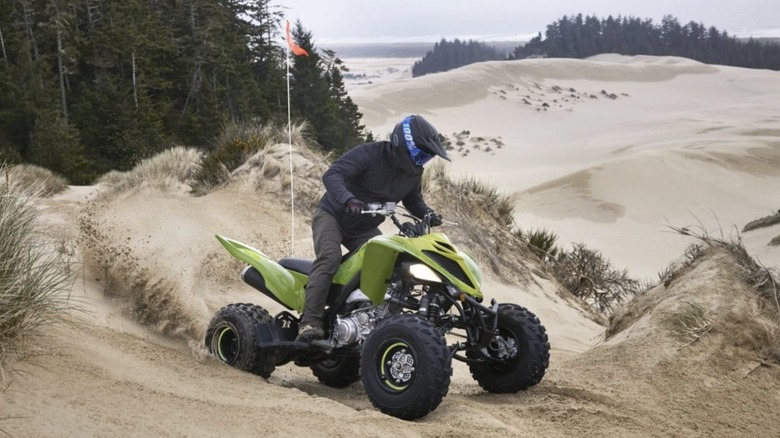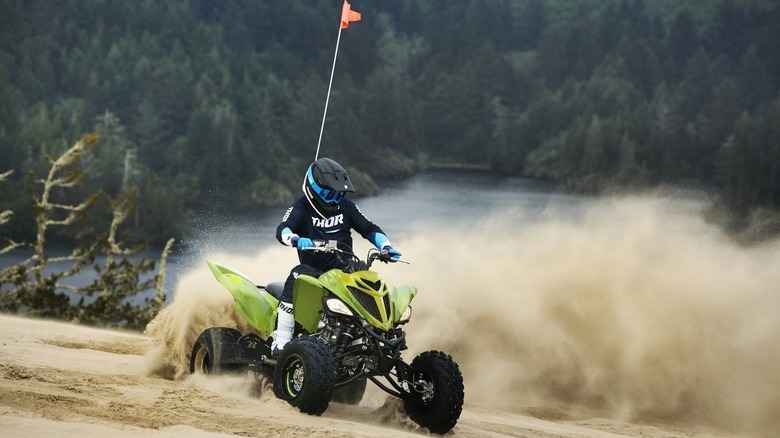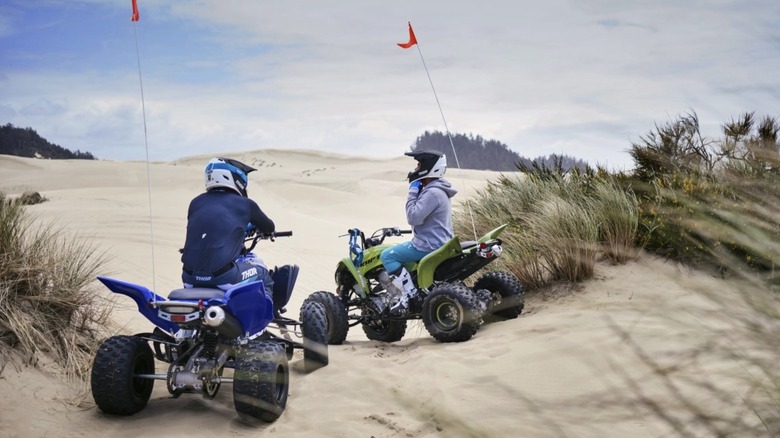Yamaha Raptor 700 Vs. 700R Vs. 700R SE: What's Different Between These Sport ATVs?
If you're in the market for a new Sport ATV, renowned motorcycle and motorsports maker Yamaha is definitely one of the brands that you may consider. The Japanese automotive major has had a long history of selling ATVs in the U.S.: Yamaha's first ATV for the U.S. market — the Tri-Moto was launched more than 40 years ago — in 1980. Five years later, the company launched the YFM 200, which became the first 4-wheel ATV from Yamaha to be sold in the U.S. Yamaha has, since then, become a major player in the ATV segment, and has regularly updated its ATV lineup with newer and better models.
Yamaha's current lineup of Sport ATVs for the U.S. market includes a wide range of products that span different price segments. The most affordable of the lot include the youth-focused YFZ50, which retails for a little over $2,300, and the Raptor 110, which will set you back by $3,599. Yamaha's racing-focused ATV segment includes the YFZ450R and the YFZ450R SE. As for the top-end, trail-focused Raptor models, these include the Raptor 700, Raptor 700R, and the Raptor 700R SE.
For anyone considering getting themselves a 700 series ATV, it is important to know the key differences between these similarly named models and what their use cases are.
The key differences between the Raptor 700 models
Most of the differences between the three Raptor 700 variants boil down to the suspension setup. The Raptor 700 is the entry-level model from the series, and its front suspension setup includes an independent double wishbone that supports 5-way preload adjustment. At the rear, the setup includes a cast iron aluminum swingarm, again with a preload adjustment option.
This is in contrast to the Raptor 700R and Raptor 700R SE models, which offer a lot more customization options as far as the suspension is concerned. While retaining the independent double wishbone at the front, both these models also offer fully adjustable high/low-speed compression as well as rebound and threaded preload adjustment.
The rear suspension setup on the Raptor 700R and the 700R SE models get the same cast aluminum swingarm as the standard variant. However, this setup gets the same customization options as the front suspension unit, including support for high/low-speed compression, as well as rebound and threaded preload adjustment. The suspension setup on the 700R and the 700R SE models are identical; the difference between the two models essentially boils down to a couple of additional features.
Opting for the Yamaha Raptor 700R SE will give you a dealer-installed GYTR front grab bar and heel guards. To differentiate it from the other variants, the 700R SE also gets distinctive graphics.
Yamaha Raptor 700 series: What are the similarities?
Now that we have addressed the key differences between the three Yamaha Raptor 700 series Sport ATVs, let's take a look at the similarities they have. To begin with, all three models in the lineup — the Raptor 700, the 700R, and the 700R SE — use the same engine, which happens to be a 686cc liquid-cooled SOHC four-stroke, four-valve engine mated to a 5-speed transmission with a reverse gear added to the mix.
All three models get a 2.9-gallon fuel tank and use hydraulic disc brakes at the front and rear. The front brakes use dual discs for enhanced stopping power. These machines also use the same tire size, and the factory-fitted tires are Maxxis-made AT22 X 7-10 ones at the front and AT20 X 10-9 tires at the rear. The Yamaha Raptor 700, 700R, and 700R SE models share the same dimensions (72.6 in x 45.5 in x 43.9 in), wheelbase (50.4 inches), and a seat height of 32.7 inches as well. These machines also have a wet weight of 422 pounds.
Prices for the 2025 model year Yamaha Raptor 700 start at $9,699, while the Raptor 700R will set you back by $10,299. The top-end Raptor 700R SE model has an MSRP of $10,899.


